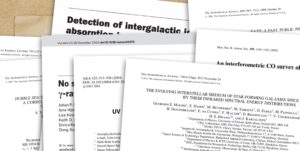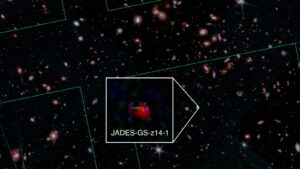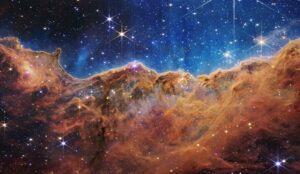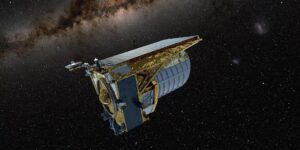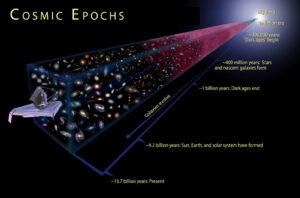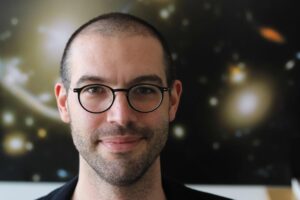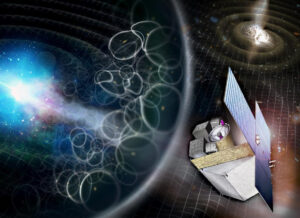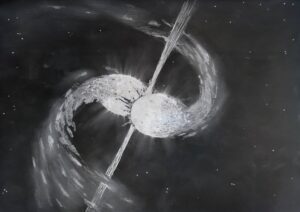Latest news from DAWN
Once again, the James Webb Space Telescope has expanded our cosmic frontiers: With the confirmation of two galaxies seen around 300 million years after the Big Bang, we are now closer than ever before to the epoch of the formation of the first galaxies. More than just another record, the galaxies are extremely bright, forcing us again to reconsider our knowledge of how structure forms in the Universe.
Read MoreOnce again, the James Webb Space Telescope has expanded our cosmic frontiers: With the confirmation of two galaxies seen around 300 million years after the Big Bang, we are now closer than ever before to the epoch of the formation of the first galaxies. More than just another record, the galaxies are extremely bright, forcing us again to reconsider our knowledge of how structure forms in the Universe.
Read MoreEndnu engang har rumteleskopet James Webb udvidet vores kosmiske grænse: Med bekræftelsen af to galakser set omkring 300 millioner år efter Big Bang er vi nu tættere end nogensinde før på epoken for skabelsen af de første galakser. Mere end blot en ny rekord, er galakserne ekstremt klare, og tvinger os dermed til at genoverveje vores viden om, hvordan struktur dannes i Universet.
Read MoreGlimpsing into the galaxies of the past: that is the daunting task that students from the University of Copenhagen have undertaken by analysing so-called Lyman-α emission. While this radiation, stemming from hydrogen, is difficult to observe, investigating alternative quantities from light spectra can depict a more accurate representation of early galaxies and their characteristics.
Read MoreToday, the first scientific studies using data from ESA’s latest space telescope, Euclid, have been released. One of these studies, led by researchers at the Cosmic Dawn Center at the Niels Bohr Institute and DTU Space, utilizes the telescopes’ enormous field of view and infrared detectors to look for rare galaxies in the early Universe that are invisible in normal light. This work marks a first step toward a grand survey exploring the dawn of the cosmos.
Read MoreFor the third time since its launch, researchers all over the world have entered the annual selection process for observing time at the James Webb Space Telescope. Among the successful proposals that have now been selected by the committee is the largest program ever conducted with Webb, “COSMOS-3D”, led by assistant professor Koki Kakiichi at the Cosmic Dawn Center. The program aims to map the early Universe in 3D, exploring how galaxies in this epoch evolved and are distributed in space.
Read MoreCongratulations to Francesco Valentino who has been awarded a large Sapere Aude grant from Independent Research Fund Denmark to join us here at DAWN, leading a project to investigate the most massive galaxies of the early Universe.
Read MoreLast year, 27 missions entered the competition for ESA’s next “medium-class” space mission. Now only three are left in the race, including the THESEUS mission with involvement from DAWN. The proposed spacecraft aims to unveil the secrets of stellar explosions in the early Universe.
Read MoreGamma-ray bursts are brief flashes of the most energetic form of light, reaching us from the distant Universe. They have their origin in stellar explosions, but the exact circumstances are still debated. Now a team of researchers including astronomers from the Niels Bohr Institute has used the James Webb Space Telescope to study a gamma-ray burst, which turned out to be the second-brightest ever seen. The study, which has just been published in Nature, revealed the creation of the element tellurium which had not been recognized before.
Read MoreIn recent years, astronomy has seen itself in a bit of crisis: Although we know that the Universe expands, and although we know approximately how fast, the two primary ways to measure this expansion do not agree. Now astrophysicists from the Niels Bohr Institute suggest a novel method which may help resolve this tension.
Read More
